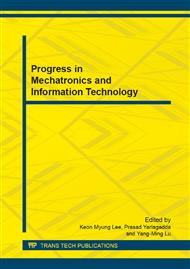p.1046
p.1050
p.1055
p.1062
p.1068
p.1072
p.1076
p.1081
p.1087
A Middle-Ranking Cadre of Universities Evaluation Management Information System Based on SOA
Abstract:
In order to meet various needs and realize software reuse, a middle-ranking cadre of universities evaluation management information system (MCE-MIS) based on SOA is proposed. It is a loosely coupled, protocol independent information system integrating existing information systems such as Personnel and Performance MIS. After analyzing the requirement of the system, the cadre evaluation flowchart, use case and system integration solution are described in detail. SOA provides a solution to set up low-cost, open and flexible integration system in universities.
Info:
Periodical:
Pages:
1068-1071
Citation:
Online since:
November 2013
Authors:
Price:
Сopyright:
© 2014 Trans Tech Publications Ltd. All Rights Reserved
Share:
Citation:


